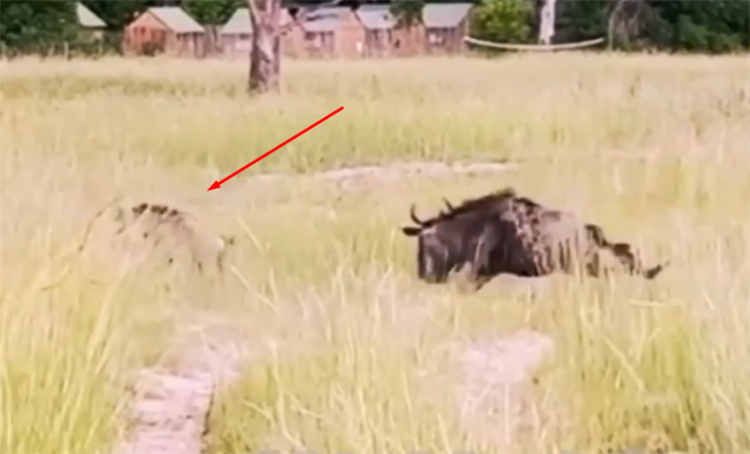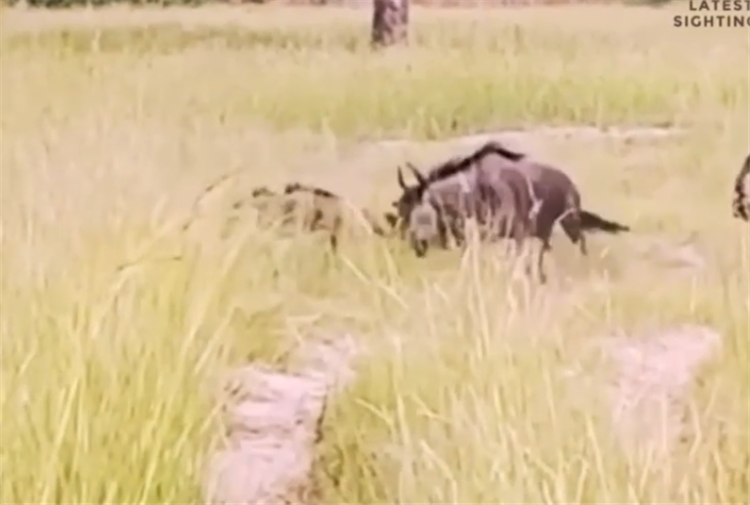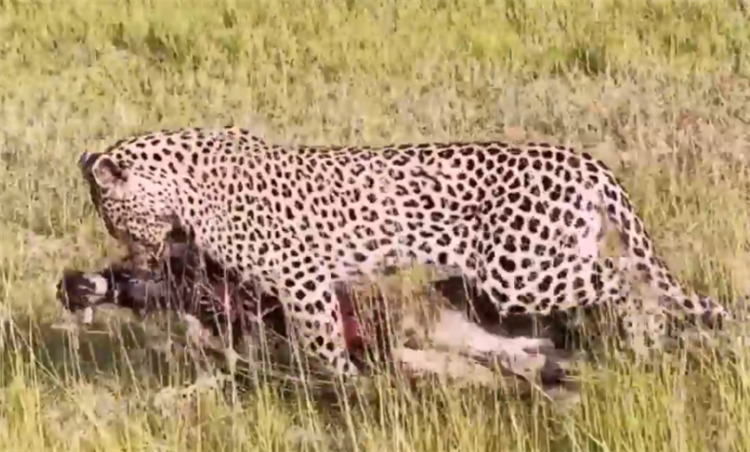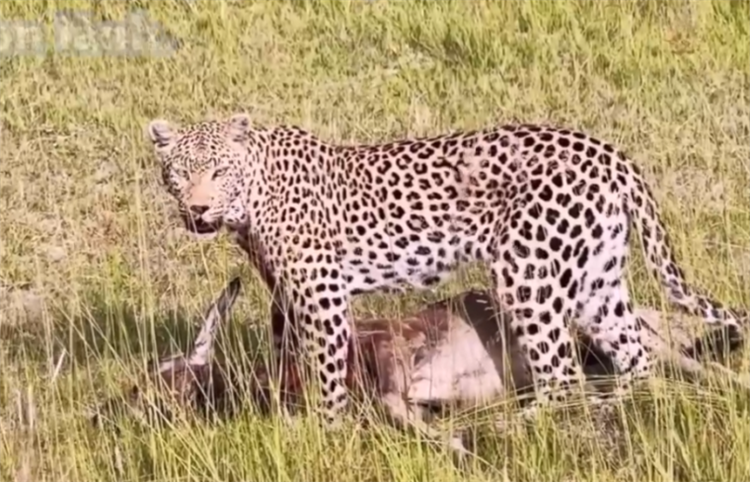The clip, recorded by a tourist in Kruger National Park (South Africa), shows the moment a herd of wildebeest is running across the lawn without noticing a leopard hiding under the trees. tall grass.
When he saw the mother and baby antelope running in front of him, the leopard waited for the mother antelope to pass before jumping out to attack the young.
The mother antelope, when she realized that her baby was attacked by a leopard, immediately returned, trying to use her horns to fight the predator to find a way to rescue her baby.

Unfortunately, the power of motherly love is not enough to help the mother antelope save her baby. The image at the end of the clip shows the leopard dragging the carcass of the baby antelope to prepare a delicious meal.
A remarkable detail in the clip is that the other members of the antelope herd showed indifference without showing any intention to help the mother antelope rescue her baby. If the antelope herds team up, leopards will most likely have to leave their prey behind to escape.

The clip about the leopard’s hunt and the failed attempt of the mother antelope trying to rescue her baby has “caused a fever” after being posted on social networks.
“It’s a pity that the mother antelope’s efforts could not save her baby. No matter how hard you try, you don’t have the strength, all efforts can’t be rewarded,” said one social media user. Twitter comments.
“It is difficult to understand why the whole herd of antelopes are indifferent when a member of the herd is being attacked. Is it possible that with antelope herd, the ill-fated individual will be targeted by predators and they see it as a determination. fate can’t resist?”, another Twitter user commented.

The antelope that appears in the clip is a blue wildebeest. At maturity, males can weigh about 250kg, while females weigh about 180kg. Wildebeest can live for more than 40 years, but their average lifespan in the wild is usually just under 20 years.
Despite possessing size, weight and strength superior to leopards, however, wildebeest are still one of leopard’s favorite prey targets.
Wildebeest are highly herding animals, in which the young will be protected by the adults, which is why leopards often wait for the time when the young to separate from the herd or the adults. negligent to attack the young antelope. However, it is not clear why in the clip above, the wildebeest herd is quite indifferent to the young being attacked by leopards.

The clip also shows the remarkable camouflage ability of leopards. This leopard does not have the speed of a cheetah, but it possesses the ability to camouflage and always knows how to approach its prey silently, before launching a pounce to quickly finish the prey.
Leopards are independent predators, and they always know how to avoid areas frequented by large carnivores. Leopards are also very good climbers and will actively climb high trees to hide when attacked by large carnivores such as lions.
